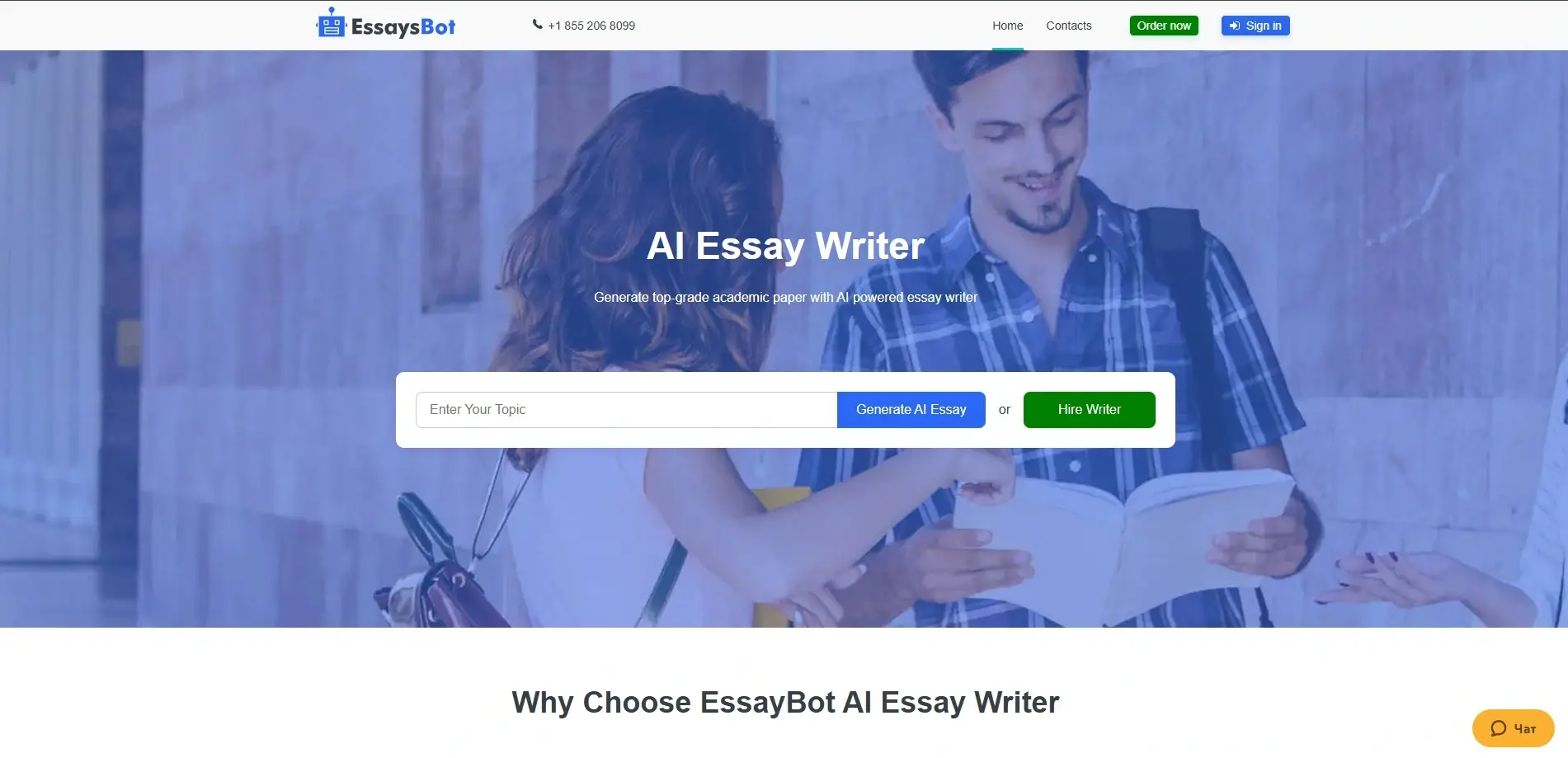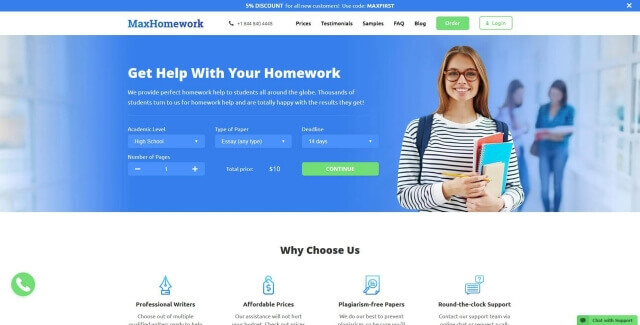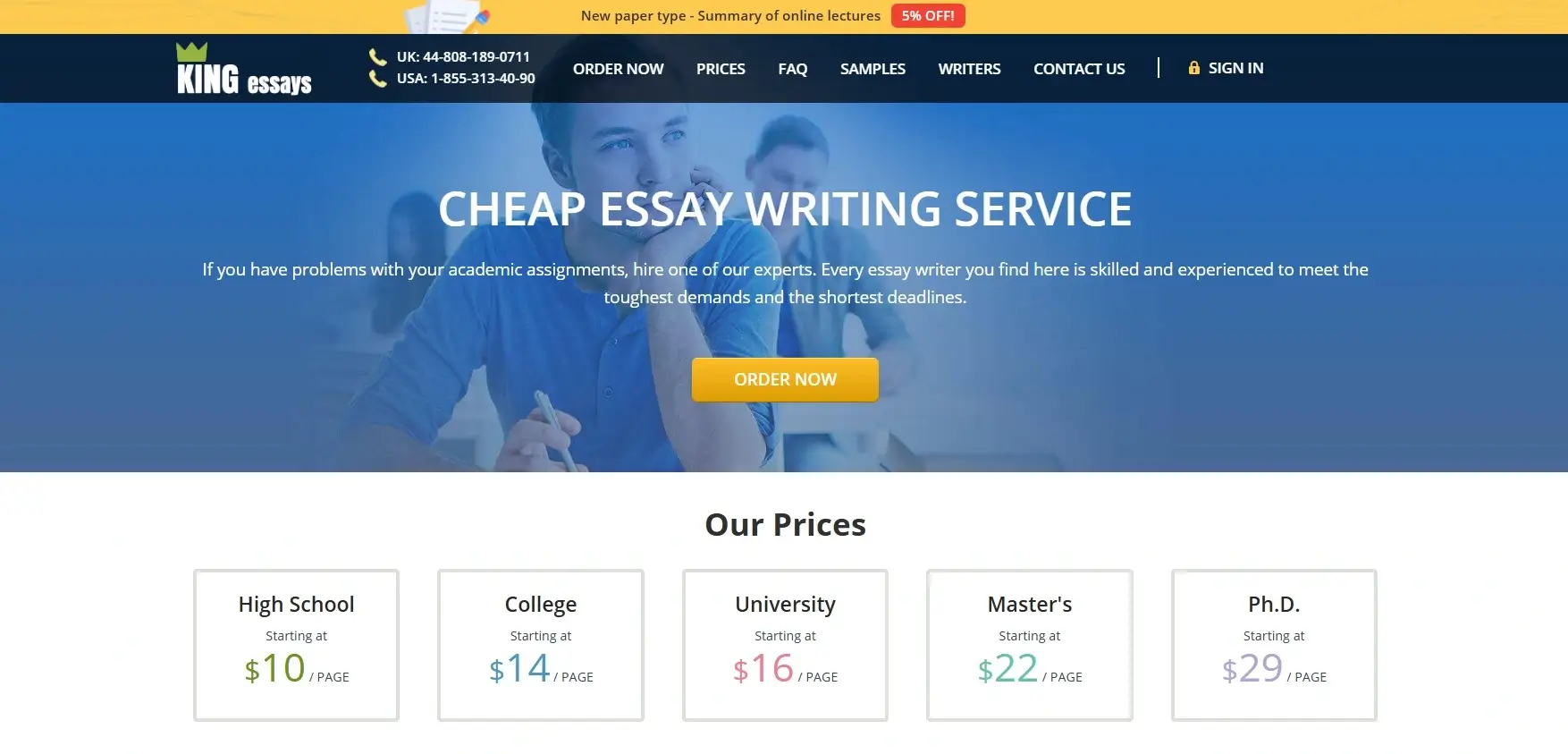October 2025
EssaysBot AI Essay Writer Review: Can AI Write Your College Papers?
- Free of charge
- AI-generated drafts
- Citation support
- Confidentiality
Table of Contents
Toggle
I’ve been in education long enough to watch study habits transform with every new tool – from physical flashcards to Quizlet, from handwritten outlines to Google Docs, and now, AI essay generators. Students don’t ask me if they should use them anymore, but how far they can rely on them without blowing up their GPA. One of the names that constantly pops up is EssaysBot. I decided to spend time with it, not just to see what it produces but to think through what it means for real students under pressure.
First Impressions
The homepage wastes no time: “AI Essay Writer. Generate top-grade academic paper with AI powered essay writer.” No mystery. Type a topic, press a button, and there’s your draft. I immediately felt both relief and suspicion. Relief because anyone who has stared at a blank Word document knows the pain. Suspicion because “top-grade” is a heavy promise.
The design is clean, maybe even too stripped down. The main call to action is obvious – you either generate an essay instantly or hire a human writer. That split right there says a lot: this isn’t a full replacement for human effort; it’s an option on the spectrum between DIY and outsourcing.
How EssaysBot Says It Works

The flow is broken into four steps, each displayed with icons:
- Type in your topic.
- Watch the draft.
- Edit the piece.
- Download it.
It looks almost childlike in simplicity, which is clever marketing. But students know better – the heavy lifting is in steps 3 and 4. The first two feel more like spectacle than substance.
Core Features (According to EssaysBot)
Here’s what the site itself promises:
- Superior Quality: Essays tailored to how students “actually” write.
- Total Confidentiality: No tracking, no hidden logs, nothing saved.
- Extra Features: Built-in citation tools, formatting helpers, and draft polishing.
They also emphasize that it paraphrases automatically to avoid plagiarism detectors. That caught my eye, since plagiarism anxiety runs deep in higher ed.
Putting It to the Test
I typed in a topic that nearly every freshman stumbles through at some point: “Causes of the French Revolution.” Within seconds, a draft popped up on the screen. Not gibberish. Not the kind of vague filler you sometimes get from generic text spinners either. The sentences had shape, and the paragraphs seemed to follow a logical flow. It was serviceable – an outline dressed up as prose.
But when I read closer, something stood out. The essay didn’t feel like a singular voice. It reminded me of skimming through several textbooks and copying one sentence from each. Coherent, yes, but more stitched-together quilt than seamless fabric. That isn’t necessarily a flaw, depending on how you use it. In fact, it confirmed something the platform says openly: EssaysBot AI Essay Writer isn’t trying to be a ghostwriter. It’s a draft machine, a spark generator.
What impressed me most wasn’t the content itself but the speed. In under 10 seconds, I had three paragraphs to work with. Compare that to the usual half hour of staring at a blank screen, waiting for the first sentence to land. For a student on deadline, that kind of head start can feel like oxygen.
Still, the draft had gaps. It touched on taxation, social inequality, and Enlightenment influence, but without depth or nuance. There were no dates, no specific thinkers, no economic statistics. It sounded like the skeleton of an essay waiting for muscle and skin. That’s where the responsibility shifted back to me. If I wanted something that could survive even a basic grading rubric, I had to revise heavily – fact-check the claims, add quotes from sources, and inject my own argument.
One detail caught my eye: the phrasing was just off enough that I could imagine a professor spotting it. Phrases such as “the people were not happy with the unfair system” felt too generic. It read more like placeholder text than a developed idea. Useful for brainstorming, but not submission-ready. In that sense, EssaysBot essay generator functioned less like a writer and more like a brainstorming partner who gives you half-formed sentences. You don’t copy their words – you take them as prompts and run with them. That’s when I realized its real utility: clearing the fog of hesitation and giving students a structure to push against.
Why Students Gravitate Toward Tools Like This

I’ve spent years listening to students complain that writing takes longer than studying for exams. It’s true – papers are time sinks. That’s where EssaysBot slides in, promising:
- Speed: Drafts in seconds.
- Idea Generation: Sparks structure when your brain is fried.
- Confidence Boost: A screen that isn’t blank anymore.
The psychology matters. A blank page is intimidating. Seeing three paragraphs appear almost instantly gives you momentum you didn’t have before.
Types of Use Cases
Not every student approaches EssaysBot with the same intention, and that’s why its impact varies so widely. After watching how it’s used, I’d group the habits into three clear categories.
1. Emergency Drafting
This is the most common scenario. A student realizes at 10:30 p.m. that a paper is due before midnight. Panic sets in, and instead of starting from scratch, they turn to EssaysBot AI Essay Writer. Within minutes they have a draft to copy into Word, and from there it’s a race to clean it up just enough to pass. In this mode, EssaysBot is a lifeline – not because it produces brilliance, but because it produces something. The risk here is that in the rush, students often don’t fact-check or personalize the work, which means errors or generic statements slip through. It’s academic survival, not excellence.
2. Brainstorm Partner
This group tends to be stronger writers who don’t actually want a full essay written for them. They’re stuck on an introduction, struggling with a thesis statement, or unsure how to structure their points. EssaysBot gives them a framework: a few sentences that can be reshaped into something original. Some also use the citation generator or paraphrasing tool as a way to speed up busywork. In these cases, the AI functions almost like a sparring partner, someone to bounce ideas off of. The draft isn’t the destination; it’s the springboard. Done right, this use case can even teach students about flow and organization, since they can compare their own writing style against what the AI suggests.
3. Shortcut Temptation
Then there’s the risky group. These are the students who copy and paste the AI’s draft with minimal changes and submit it as-is. On the surface, it feels efficient – no time wasted, no stress endured. But the downside is serious. Professors can tell when an essay lacks a human voice or when phrasing feels stitched together. Plagiarism checkers may not always catch AI-generated text, but detection software is improving fast. The bigger issue, though, is long-term: relying on the shortcut erodes writing skills. The students who lean on EssaysBot this way often struggle later when assignments demand analysis, creativity, or personal reflection – things an algorithm can’t truly replicate.
Benefits I Noticed
- Instant Structure: No more staring at an empty doc.
- Citation Generator: Supports APA, MLA, Chicago. Helpful for freshmen who haven’t memorized styles yet.
- No Data Collection: Their claim about confidentiality matters in a time when privacy is shaky.
- Accessibility: Works in a web browser, no installation, no learning curve.
The Downsides No One Should Ignore
- Quality Ceiling: Essays read mechanical. Professors will notice.
- Over-Paraphrasing: Text sometimes feels forced, as if synonyms are swapped blindly.
- Risk of Overreliance: Students may submit work without critical thought, which erodes skill growth.
- Ethical Gray Zone: Colleges rarely distinguish between “AI help” and “plagiarism.” You could face penalties.
Worst-case scenario? A professor runs text through detection software, sees AI fingerprints, and you’re flagged. Not expelled, maybe, but marked as careless.
Can EssaysBot Actually Earn You an A?
Short answer: unlikely. The essays are serviceable, not brilliant. If the grading rubric rewards originality and argument depth, you’ll lose points. But if the assignment is routine – say, a 2-page reflection in intro sociology – then yes, it can cover the base.
I wouldn’t expect it to carry a capstone project or a senior thesis. It’s an assistant, not a miracle worker.
How to Use EssaysBot Without Shooting Yourself in the Foot
Here’s the workflow I’d recommend if a student insists on trying it:
- Generate Draft: Enter your topic and skim the output.
- Fact-Check: Cross-verify dates, names, and references. AI sometimes fabricates details.
- Rewrite Actively: Treat the draft as scaffolding. Rewrite in your own voice.
- Insert Sources: Use the citation tool but verify with real databases (JSTOR, Google Scholar).
- Polish: Run your final draft through Grammarly or a writing center.
Strategies That Actually Make It Useful
- Use It Early: Don’t wait until 11:50 p.m. The earlier you start, the more you can shape the draft.
- Mix With Human Feedback: Professors respect effort. Submit an outline to them and revise with their comments.
- Learn From It: Pay attention to how the AI structures arguments. Use it as a learning example.
- Don’t Copy Blindly: That’s the trap. AI should never be the final word.
Where EssaysBot Helps vs Where It Hurts
| Situation | Helpful | Risky |
| Brainstorming ideas | ✅ | |
| Last-minute emergency | ✅ | Quality drops |
| Learning citation styles | ✅ | |
| Long research projects | ❌ | |
| Building writing skills | ❌ |
EssaysBot isn’t the villain some make it out to be. Nor is it the savior students dream about. It sits in a middle zone – a draft generator that can save time but also short-circuit your growth if abused.
Would I recommend it? Only if you treat it as scaffolding, not as the final essay. Think of it as a calculator: it can crunch numbers, but if you don’t understand the math, the test will expose you. Same with writing.
If you’re stuck, it’s worth experimenting with. Just don’t outsource your thinking to a machine that doesn’t know what it feels like to pull an all-nighter or argue with a stubborn professor. That part is still on you.
Student Questions I Hear Often
Will Turnitin catch this?
Possibly. EssaysBot claims paraphrasing avoids detection, but detectors evolve constantly.
Is it free?
No. You’ll eventually hit a paywall, though you can generate small drafts first.
Do professors know?
More than you think. Writing voice is distinct. If your AI draft doesn’t match past work, suspicion rises.
Can it handle specific citation styles?
Yes. EssaysBot offers APA, MLA, and Chicago. But it sometimes misformats details, so double-check references against a style guide.
Does it work for long research papers?
Not well. The tool is better at shorter, generic essays. Anything over 6–7 pages often turns repetitive or thin.
Is it safe to type personal info into it?
I wouldn’t. They say no logs are saved, but it’s smarter to avoid sharing personal identifiers or unpublished ideas.
Can it improve my writing over time?
Only if you treat it as practice. If you use it passively, your writing plateaus. If you compare and rewrite, you’ll notice patterns that help you grow.





